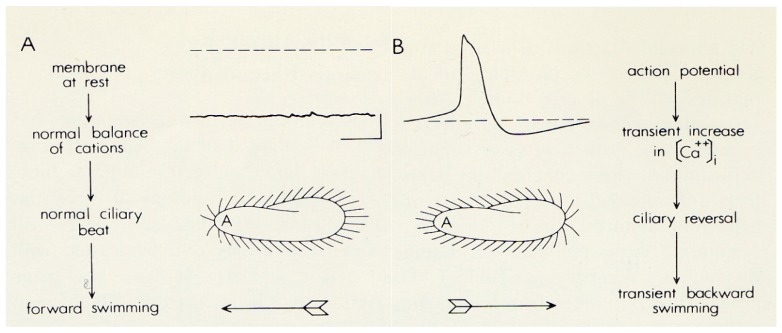Figure 2.
A. These images are to demonstrate that the intracellular membrane potential of Paramecium is negative (about −25 to −40 mV); the corresponding ciliary beat is toward the posterior of the cell and the cell swims forward. B. In depolarizing solutions, like high K+ or Ba2+, the cell’s membrane potential depolarizes and reaches threshold for the action potential. During the action potential calcium enters the cilia through voltage gated channels, the high levels of Ca2+ change the power stroke of the cilia, which now beat most strongly toward the anterior and move the cell backward. The action potential is quickly over and the calcium is removed from or sequestered in the cilia, allowing the ciliary beat and swimming to return to normal. With permission from Science [3].

